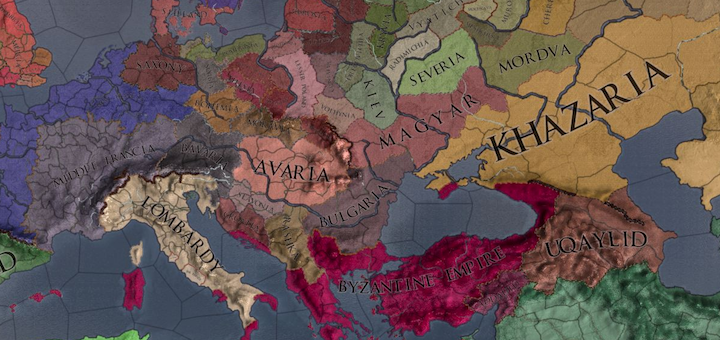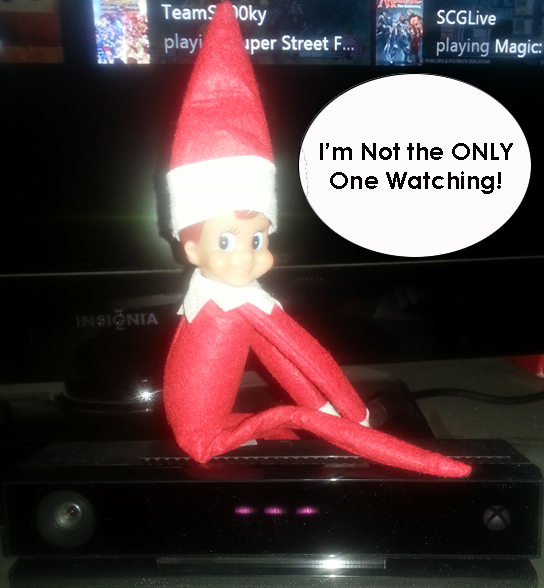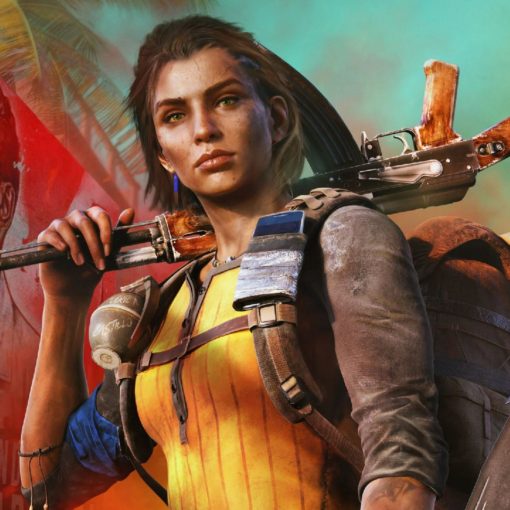So, it’s no secret that Grim Fandango that is one of my favorite games ever. For years I would go back and replay sections of the game every year on the Day of the Dead. It was kind of a ritual. So when the announcement came that Double Fine was going to be doing a remastered version of the game I was ecstatic. New graphics, full orchestral score, better game controls, all of the things that I thought could only make the game more awesome. I should also admit that it is impossible for me to just talk about the first hour of the game because I have played it so many times (and now on three different platforms), so I will focus on the first narrative thread of the game itself.
One of the first things that I should mention about this game is that while the controls of the game itself are greatly improved (the original was sometimes maddening) it is still very much an old school point and click adventure game. Where you can go, what you can do, and who you can talk to is still limited by what events you have triggered so far and what items you are holding in your inventory. But as someone who spent a whole lot of hours with this genre of games in the late 1990s and early 2000s, I am more than ok with that and I have found that lots of younger folks that are playing the game are as well. I have played Grim Fandango Remastered on PC, PS4 (with Pea), and on the Vita. There doesn’t seem to be much difference in the console versions, but I find the iconography used to interact with the world in the PC version unnecessarily confusing, but this may be because I am so used to the original PC controls. I have often thought that this game would be extremely well suited for play on the Vita and I have to admit that I was absolutely right. The Vita version in definitely my favorite because of portability and the ease of navigation (it is also Cross-Buy and Cross-Play with the PS4 version).
In addition to the improved controls, the score of the game that has always served as a kind of secondary protagonist is even better now that it is being performed by a full orchestra. The voice acting remains the same (wonderful) and while most of the characters have accents they are not stereotypical or offensive in their attempt at authenticity. The treatment of Mexican culture and the celebrations and traditions surrounding the Day of the Dead (Dia de los Muertos) are well done and I didn’t find them at all as offensive as I did the treatment in Guacamelee,
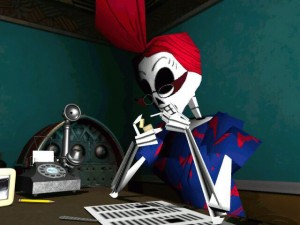 And now for the big question, what about women in the game? The first NPC that we meet in the game in Eva, the secretary in the office where you (Manny Calavera, there is no option to play as a woman) work. Eva at first blush seems to be the stereotypical, outspoken Jersey girl. She complains about her boss and gives you shit for hitting on her or asking her to do things that are outside of her job description. In traditional Film Noire fashion she is accompanied by a sultry, bluesy musical track and she spends a lot of time sitting at her desk smoking cigarettes and filing her nails. (I was also surprised at how much the amount of cigarette smoking stood out in this game. Oh, what a difference 16 years makes.)
And now for the big question, what about women in the game? The first NPC that we meet in the game in Eva, the secretary in the office where you (Manny Calavera, there is no option to play as a woman) work. Eva at first blush seems to be the stereotypical, outspoken Jersey girl. She complains about her boss and gives you shit for hitting on her or asking her to do things that are outside of her job description. In traditional Film Noire fashion she is accompanied by a sultry, bluesy musical track and she spends a lot of time sitting at her desk smoking cigarettes and filing her nails. (I was also surprised at how much the amount of cigarette smoking stood out in this game. Oh, what a difference 16 years makes.)
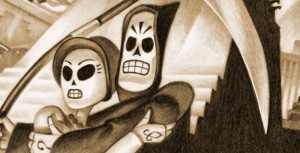 Unfortunately, I’m not sure that Meche, the soft spoken saint of a woman who dies from chicken pox presumably contracted while reading to sick children in the hospital, fares as well as she does not stand up for what is rightfully hers (a ticket on the Number 9 train to the afterlife). It is obvious from the moment that she appears in Manny’s office that she is probably going to be his love interest and that he is going to finally be able to prove himself and move on from Limbo by saving her after she “naively” begins to walk (alone) through the demon ridden underworld to get to her final resting place.
Unfortunately, I’m not sure that Meche, the soft spoken saint of a woman who dies from chicken pox presumably contracted while reading to sick children in the hospital, fares as well as she does not stand up for what is rightfully hers (a ticket on the Number 9 train to the afterlife). It is obvious from the moment that she appears in Manny’s office that she is probably going to be his love interest and that he is going to finally be able to prove himself and move on from Limbo by saving her after she “naively” begins to walk (alone) through the demon ridden underworld to get to her final resting place.
Grim Fandango Remastered overall is a great ride (pun intended), but it still has it’s moments. The controls are smoother, but where and how you can move can still be infuriating (nothing like walking so far in one direction that you just get bumped back to the beginning). The story is still from an age when women were typically seen as saints or whores and the “good” men were sensitive guys who had to prove their masculinity by saving women, often in the face of arrogant male braggarts who drip machismo. Keeping this in mind and seeing the good in the story and the characters that you can quickly come to love will definitely make this one of your favorites in the genre.

